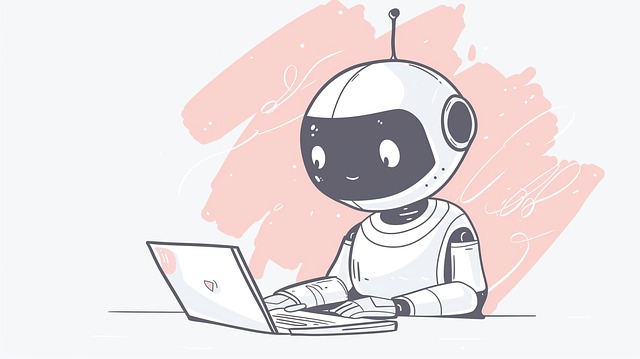Generative AI, powered by advanced algorithms and large language models (LLMs), is revolutionizing AI chatbot interactions. These chatbots offer human-like text generation and diverse conversation capabilities, transforming user experiences across various sectors like customer service, education, entertainment, and content creation. Understanding rule-based vs. generative AI models is crucial for developing innovative AI chatbots (ochatbots) that provide personalized, adaptable, and engaging experiences, while optimizing search visibility with keywords like "AI chatbot" and "ochatbot."
Building a Generative AI Chatbot: A Comprehensive Guide
In today’s digital landscape, AI chatbots are transforming how businesses interact with customers. This guide delves into the process of creating an effective ochatbot, focusing on understanding generative AI and its unique capabilities. We explore the distinctions between rule-based and generative AI chatbots, breaking down key components for successful design and development. Learn about crafting a user-centric experience, choosing the right tools, training with quality data, and fine-tuning models to create an engaging, accurate ochatbot ready to serve your audience.
- Understanding Generative AI and Chatbots
- – Defining generative AI
- – Types of AI chatbots: rule-based vs. generative
Understanding Generative AI and Chatbots

Generative AI refers to artificial intelligence that can create new content such as text, images, and even music. In the context of an AI chatbot, this means it’s capable of generating human-like responses that are contextually relevant and diverse. These chatbots leverage advanced algorithms and large language models (LLMs) trained on vast datasets to understand and generate natural language.
OCchatbots have transformed the way we interact with technology, offering more engaging and personalized experiences. They can assist with customer service, provide information, automate tasks, and even engage in creative conversations. Understanding how generative AI powers these chatbots is key to building effective and innovative conversational agents that cater to a wide range of user needs.
– Defining generative AI

Generative AI refers to a type of artificial intelligence that can create new and diverse content, such as text, images, or music, that is often indistinguishable from human-generated works. Unlike traditional AI systems that primarily analyze and process existing data, generative AI uses advanced algorithms, like deep learning and neural networks, to learn patterns and generate novel outputs. When applied to chatbots, this technology allows them to engage in more natural, contextual, and creative conversations with users.
An AI chatbot equipped with generative capabilities can understand user prompts on a deeper level, providing responses that go beyond simple keyword matching. It can generate personalized answers based on the conversation’s flow, context, and even the user’s preferences. This not only enhances the user experience but also makes AI chatbots more adaptable and versatile, making them suitable for various applications, from customer service and content creation to education and entertainment.
– Types of AI chatbots: rule-based vs. generative

When creating an AI chatbot, understanding the distinction between rule-based and generative models is key. Rule-based chatbots operate on predefined rules and scripts, following a set flow of questions and answers. They are excellent for handling simple, straightforward queries and can provide accurate responses within their programmed framework. However, they lack adaptability and creativity in conversation.
Generative AI chatbots, on the other hand, leverage advanced techniques like Natural Language Processing (NLP) and machine learning to generate human-like text. These models learn from vast datasets and can produce diverse, contextually relevant responses. They’re capable of understanding nuances, adapting to user inputs, and even engaging in imaginative conversations. This makes generative chatbots more versatile and appealing for creating dynamic, interactive experiences with users, often referred to as an ochatbot.
Building a generative AI chatbot is an exciting endeavor that leverages the power of advanced machine learning techniques. By understanding the fundamentals of generative AI and its distinction from rule-based chatbots, developers can create intelligent and dynamic conversational agents. This article has provided insights into the process, highlighting key considerations for crafting engaging and contextually relevant responses. With the right tools and strategies, creating an ochatbot that enhances user experiences is within reach, opening up a world of possibilities in customer service, education, and beyond.
